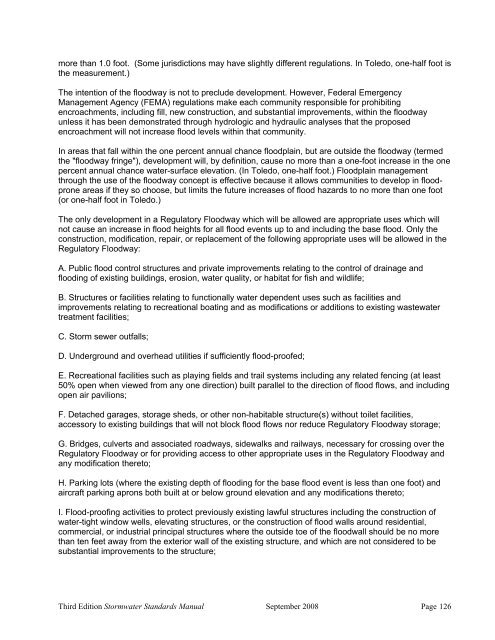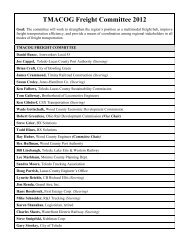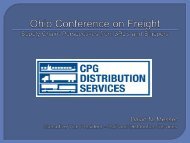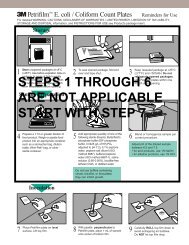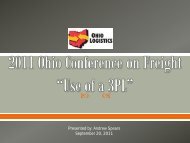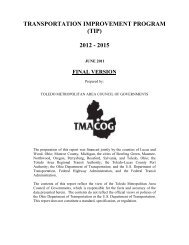Stormwater Management Standards Manual - Toledo Metropolitan ...
Stormwater Management Standards Manual - Toledo Metropolitan ...
Stormwater Management Standards Manual - Toledo Metropolitan ...
Create successful ePaper yourself
Turn your PDF publications into a flip-book with our unique Google optimized e-Paper software.
more than 1.0 foot. (Some jurisdictions may have slightly different regulations. In <strong>Toledo</strong>, one-half foot is<br />
the measurement.)<br />
The intention of the floodway is not to preclude development. However, Federal Emergency<br />
<strong>Management</strong> Agency (FEMA) regulations make each community responsible for prohibiting<br />
encroachments, including fill, new construction, and substantial improvements, within the floodway<br />
unless it has been demonstrated through hydrologic and hydraulic analyses that the proposed<br />
encroachment will not increase flood levels within that community.<br />
In areas that fall within the one percent annual chance floodplain, but are outside the floodway (termed<br />
the "floodway fringe"), development will, by definition, cause no more than a one-foot increase in the one<br />
percent annual chance water-surface elevation. (In <strong>Toledo</strong>, one-half foot.) Floodplain management<br />
through the use of the floodway concept is effective because it allows communities to develop in floodprone<br />
areas if they so choose, but limits the future increases of flood hazards to no more than one foot<br />
(or one-half foot in <strong>Toledo</strong>.)<br />
The only development in a Regulatory Floodway which will be allowed are appropriate uses which will<br />
not cause an increase in flood heights for all flood events up to and including the base flood. Only the<br />
construction, modification, repair, or replacement of the following appropriate uses will be allowed in the<br />
Regulatory Floodway:<br />
A. Public flood control structures and private improvements relating to the control of drainage and<br />
flooding of existing buildings, erosion, water quality, or habitat for fish and wildlife;<br />
B. Structures or facilities relating to functionally water dependent uses such as facilities and<br />
improvements relating to recreational boating and as modifications or additions to existing wastewater<br />
treatment facilities;<br />
C. Storm sewer outfalls;<br />
D. Underground and overhead utilities if sufficiently flood-proofed;<br />
E. Recreational facilities such as playing fields and trail systems including any related fencing (at least<br />
50% open when viewed from any one direction) built parallel to the direction of flood flows, and including<br />
open air pavilions;<br />
F. Detached garages, storage sheds, or other non-habitable structure(s) without toilet facilities,<br />
accessory to existing buildings that will not block flood flows nor reduce Regulatory Floodway storage;<br />
G. Bridges, culverts and associated roadways, sidewalks and railways, necessary for crossing over the<br />
Regulatory Floodway or for providing access to other appropriate uses in the Regulatory Floodway and<br />
any modification thereto;<br />
H. Parking lots (where the existing depth of flooding for the base flood event is less than one foot) and<br />
aircraft parking aprons both built at or below ground elevation and any modifications thereto;<br />
I. Flood-proofing activities to protect previously existing lawful structures including the construction of<br />
water-tight window wells, elevating structures, or the construction of flood walls around residential,<br />
commercial, or industrial principal structures where the outside toe of the floodwall should be no more<br />
than ten feet away from the exterior wall of the existing structure, and which are not considered to be<br />
substantial improvements to the structure;<br />
Third Edition <strong>Stormwater</strong> <strong>Standards</strong> <strong>Manual</strong> September 2008 Page 126


